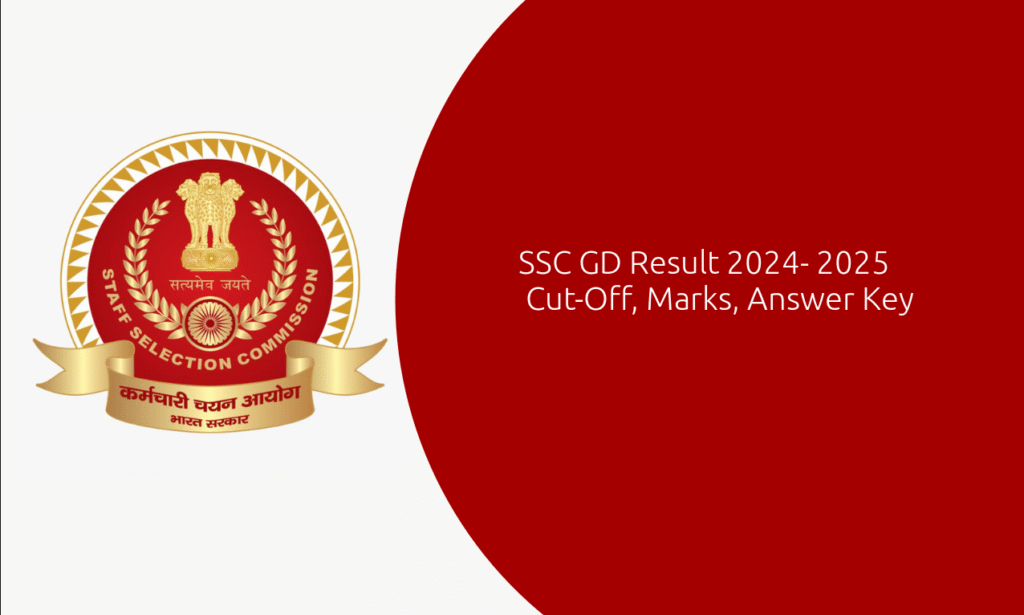AS Exam Posts Salary-Wise & Group-Wise Breakdown [2025 Edition] : The Indian Administrative Service (IAS) is not just a career—it’s a calling. Every year, lakhs of aspirants dream of cracking the UPSC Civil Services Exam to earn a spot among the country’s most powerful and respected officers. But beyond the prestige and responsibility, many candidates are curious about the real rewards—the salary, the perks, and the position hierarchy. In this post, we break down all IAS posts salary-wise and group-wise, from entry-level roles to the topmost bureaucratic ranks like the Cabinet Secretary. If you’re wondering what life looks like after you become an IAS officer, this is your all-in-one guide.
Dreaming of becoming an IAS officer? Let’s decode what’s waiting for you after you crack the toughest exam in India — the UPSC Civil Services Exam. From starting positions to top-tier designations, here’s a complete breakdown of IAS posts by Group and Salary.
IAS Salary in India 2025 – Rank-wise Pay, & Power Explained
Becoming an Indian Administrative Service (IAS) officer is a dream for millions of UPSC aspirants—and for good reason. Apart from the prestige and responsibility, IAS officers enjoy one of the most rewarding salary structures in the Indian government sector. In 2025, the IAS pay scale continues to follow the 7th Pay Commission, offering attractive salaries, allowances, and career growth from entry-level Group A positions to top-level roles like Cabinet Secretary. This article gives you a complete, rank-wise breakdown of IAS salary in India, including grade pay, perks, and the real power each post holds. If you’re aiming for the UPSC Civil Services Exam, here’s exactly what you stand to earn once you crack it!
🏛️ IAS Exam: What You Get After Selection
After clearing the UPSC CSE, candidates join various Group A and Group B services. The most prestigious among them is the Indian Administrative Service (IAS).
🔰 Entry-Level IAS Posts (Junior Time Scale)
- Post: Sub-Divisional Magistrate (SDM) / Assistant Collector / Assistant Commissioner
- Group: A
- Salary: ₹56,100/month (Level 10, 7th CPC)
- Gross Salary: ₹70,000 – ₹80,000/month (with HRA, DA, TA, etc.)
- Perks: Official residence, staff, government vehicle
⏫ Senior Time Scale (After 4 Years)
- Post: Additional District Magistrate / Deputy Secretary
- Group: A
- Salary: ₹67,700/month (Level 11)
- Gross Salary: ₹85,000 – ₹1,00,000/month
- Extras: Furnished house, upgraded vehicle, and staff
🧭 Junior Administrative Grade (After 9 Years)
- Post: District Magistrate (DM) / Collector / Joint Secretary (State Govt.)
- Group: A
- Salary: ₹78,800/month (Level 12)
- Gross Salary: ₹1,00,000+
- Influence: District-level leadership, direct command over administration
🏢 Selection Grade (After 12–15 Years)
- Post: Special Secretary / Director
- Group: A
- Salary: ₹1,18,500/month (Level 13)
- Gross Salary: ₹1.4 Lakh+/month
🧑⚖️ Super Time Scale (After 17–20 Years)
- Post: Divisional Commissioner / Secretary (State Govt.)
- Group: A
- Salary: ₹1,44,200/month (Level 14)
- Gross Salary: ₹1.6 Lakh+/month
🧿 Higher Administrative Grade (After 25+ Years)
- Post: Additional Chief Secretary / Principal Secretary
- Group: A
- Salary: ₹1,82,200/month (Level 15)
- Gross Salary: ₹2 Lakh+/month
- Power: Executive authority across departments
👑 Apex Scale (Top Bureaucracy)
- Post: Chief Secretary of State / Secretary to Govt. of India
- Group: A
- Salary: ₹2,25,000/month (Fixed – Level 17)
- Perks: Elite bungalow, top security, domestic staff
🔥 Cabinet Secretary – India’s Top Civil Servant
- Post: Cabinet Secretary of India
- Group: A
- Salary: ₹2,50,000/month (Fixed – Level 18)
- Position: Highest-ranking civil servant in India
- Influence: Directly reports to Prime Minister
🏆 Summary Table: IAS Salary by Post
| Post Level | Designation | Salary (₹) |
|---|---|---|
| Entry Level | SDM / AC / Assistant Collector | ₹56,100 |
| After 4 Years | ADM / Deputy Secretary | ₹67,700 |
| After 9 Years | DM / Collector | ₹78,800 |
| After 12–15 Years | Director / Special Secretary | ₹1,18,500 |
| After 20 Years | Divisional Commissioner | ₹1,44,200 |
| After 25 Years | Principal Secretary | ₹1,82,200 |
| Apex Post | Chief Secretary / GOI Secretary | ₹2,25,000 |
| Top Civil Servant | Cabinet Secretary | ₹2,50,000 |
💼 Facilities and Perks Enjoyed by an IAS Officer
- IAS officers not only enjoy power and responsibility but also receive top-tier facilities and benefits that reflect their role in governance. Here’s a complete list:
- 🏠 Government Residence:
Spacious and fully-furnished bungalows in prime locations with subsidized rent or completely free accommodation. - 🚗 Official Vehicle with Driver:
All IAS officers are provided with government vehicles and designated drivers for official and personal use. - 👮♂️ Security Cover:
Depending on the posting, officers receive personal security officers (PSOs) and even Z/Z+ category security in sensitive roles. - 👩🍳 Household Staff:
Access to domestic help including cooks, gardeners, and housekeeping staff, especially during DM-level postings and above. - 📞 Free Utilities:
Subsidized or free electricity, water, telephone, and broadband services. - 💼 Office and Administrative Setup:
Dedicated government office, staff, and administrative infrastructure to manage tasks efficiently. - 🏥 Medical Benefits:
Lifetime free treatment in government and top private hospitals under CGHS or state health schemes. - ✈️ Travel Allowance (TA/DA):
Free or heavily subsidized travel for official tours (domestic and international) along with daily allowances. - 📚 Study Leave and Foreign Training:
Eligible for funded study leave and training in prestigious foreign universities and institutions. - 🧓 Pension and Post-Retirement Benefits:
Lifetime pension, gratuity, and eligibility for constitutional or advisory posts post-retirement. - 🧳 Accommodation in Government Guest Houses:
Access to circuit houses, state bhavans, and government guest houses across India at minimal charges.
Powers of an IAS Officer
An IAS officer holds extensive administrative authority and plays a vital role in governance. Here are the key powers they possess:
- 🔹 Executive Power:
Implement government policies and supervise day-to-day administration of the district or department. - 🔹 Law and Order:
Maintain law and order as a District Magistrate or Sub-Divisional Magistrate with authority over police and public safety. - 🔹 Revenue Collection:
Oversee land revenue administration, tax collection, and land records maintenance. - 🔹 Disciplinary Authority:
Take disciplinary actions against lower-level government officials in their jurisdiction. - 🔹 Financial Powers:
Approve budgets, allocate resources, and sanction expenditures for development work in their region. - 🔹 Disaster Management:
Take charge during natural calamities, health emergencies, or riots by coordinating rescue and relief operations. - 🔹 Policy Implementation:
Ensure effective implementation of central and state government schemes like MNREGA, PMAY, and more. - 🔹 Supervisory Power:
Monitor the performance of various departments like education, health, rural development, etc. - 🔹 Judicial Powers (Limited):
As SDM or DM, they have quasi-judicial powers under the CrPC and other administrative laws. - 🔹 Reporting & Advisory Role:
Act as key advisors to ministers and the Chief Secretary, submitting regular reports and policy feedback. - 🔹 Representation:
Represent the government in official meetings, national and international conferences, or diplomatic forums (especially during deputation).
After How Many Years Does an IAS Officer Become a District Magistrate (DM)?
Becoming a District Magistrate (DM) is one of the most sought-after milestones for an IAS officer. On average, an IAS officer is eligible to become a DM after 5 to 6 years of service. Initially, selected candidates start their career as Sub-Divisional Magistrates (SDM) during their probation and early postings. After successfully completing training and gaining experience in field administration, officers are promoted to the Senior Time Scale, making them eligible for the DM post. However, the actual appointment as DM also depends on state cadre policies, vacancy availability, and the officer’s performance record. In smaller districts, some officers may even become DM in as little as 4 years, while in larger or more competitive districts, it could take slightly longer.
What is Deputation of an IAS Officer?
Deputation refers to the temporary assignment of an IAS officer from their parent cadre (state government) to another organization, department, or even a different level of government—usually the central government, PSUs, international bodies, or autonomous institutions. This process allows officers to gain diverse administrative experience and contribute their expertise beyond their home state. Deputation is usually offered after an officer has completed a minimum of 9 years of service, including at least 2 years in a senior scale position. Common deputation roles include postings in ministries like Home Affairs, Finance, Defence, or in global organizations like the UN, World Bank, or Indian embassies abroad. Deputation helps broaden an officer’s perspective and is often seen as a career-enhancing opportunity.
📌 Frequently Asked Questions (FAQs) – IAS Posts, Salary, and Career Growth
Q1. What is the starting salary of an IAS officer?
Ans: An entry-level IAS officer receives a basic salary of ₹56,100 per month (Pay Level 10) along with DA, HRA, TA, and other allowances. The gross monthly salary can range from ₹70,000 to ₹80,000.
Q2. After how many years does an IAS become a District Magistrate (DM)?
Ans: An IAS officer generally becomes a DM after 5 to 6 years of service, depending on performance, vacancies, and cadre-specific rules.
Q3. What is the highest post an IAS officer can reach?
Ans: The highest post for an IAS officer is the Cabinet Secretary of India, with a fixed salary of ₹2,50,000/month, making it the top-most bureaucratic position in the country.
Q4. How many groups are there in IAS services?
Ans: The IAS itself is part of the Group A services under the All India Services. However, UPSC CSE also recruits for other Group A and Group B services like IFS, IPS, IRS, etc.
Q5. What is ‘Deputation’ in IAS service?
Ans: Deputation is the temporary transfer of an IAS officer from their home cadre to another department or organization, usually within the central government or international bodies like the UN or World Bank.
Q6. Can an IAS officer work in the Central Government?
Ans: Yes, after a few years of state service, IAS officers are eligible for central deputation in ministries like Home, Finance, or Defence.
Q7. What are the main stages of promotion for an IAS officer?
Ans: The main promotion stages are:
- SDM/Assistant Collector (Entry Level)
- ADM/Deputy Secretary (after 4 years)
- DM/Collector (after 5–6 years)
- Joint Secretary (State) / Director
- Divisional Commissioner
- Principal Secretary
- Chief Secretary / Secretary to Govt. of India
- Cabinet Secretary (Top Post)
Q8. Do IAS officers get pensions after retirement?
Ans: Yes, IAS officers receive a lifetime pension under the government pension scheme, along with other post-retirement benefits.
Q9. Are IAS officers provided with official residence and vehicles?
Ans: Yes, IAS officers are entitled to free official residence, government vehicle, driver, domestic staff, and various subsidies depending on their rank and post.
Q10. Is there a difference between salary in different states for IAS officers?
Ans: The basic pay is the same across India, but allowances like HRA and TA may vary depending on the city or location (X, Y, Z category cities).
📌 Final Words
Becoming an IAS officer isn’t just about power — it’s about serving the nation. But the salary and perks? They surely match the prestige of the post. If you’re dreaming of a life of purpose, honor, and leadership — the IAS path awaits.
Related Article







